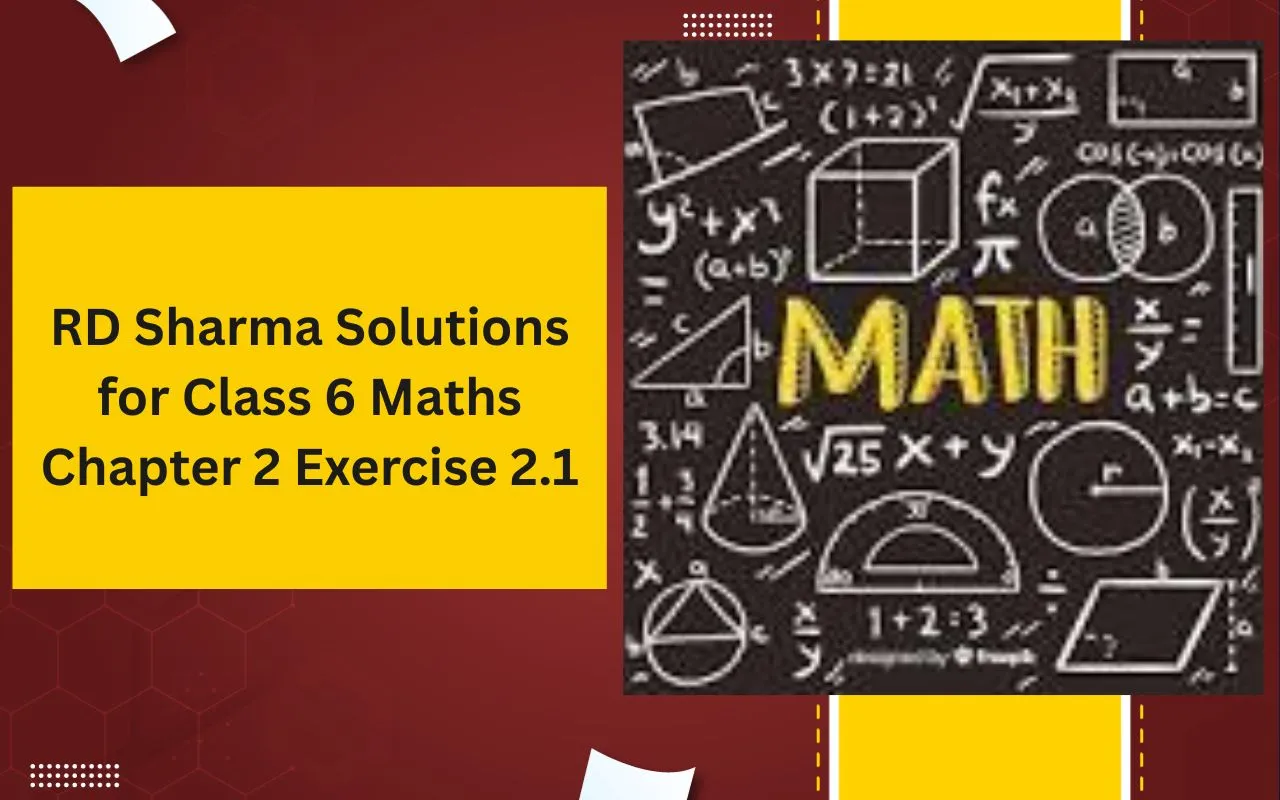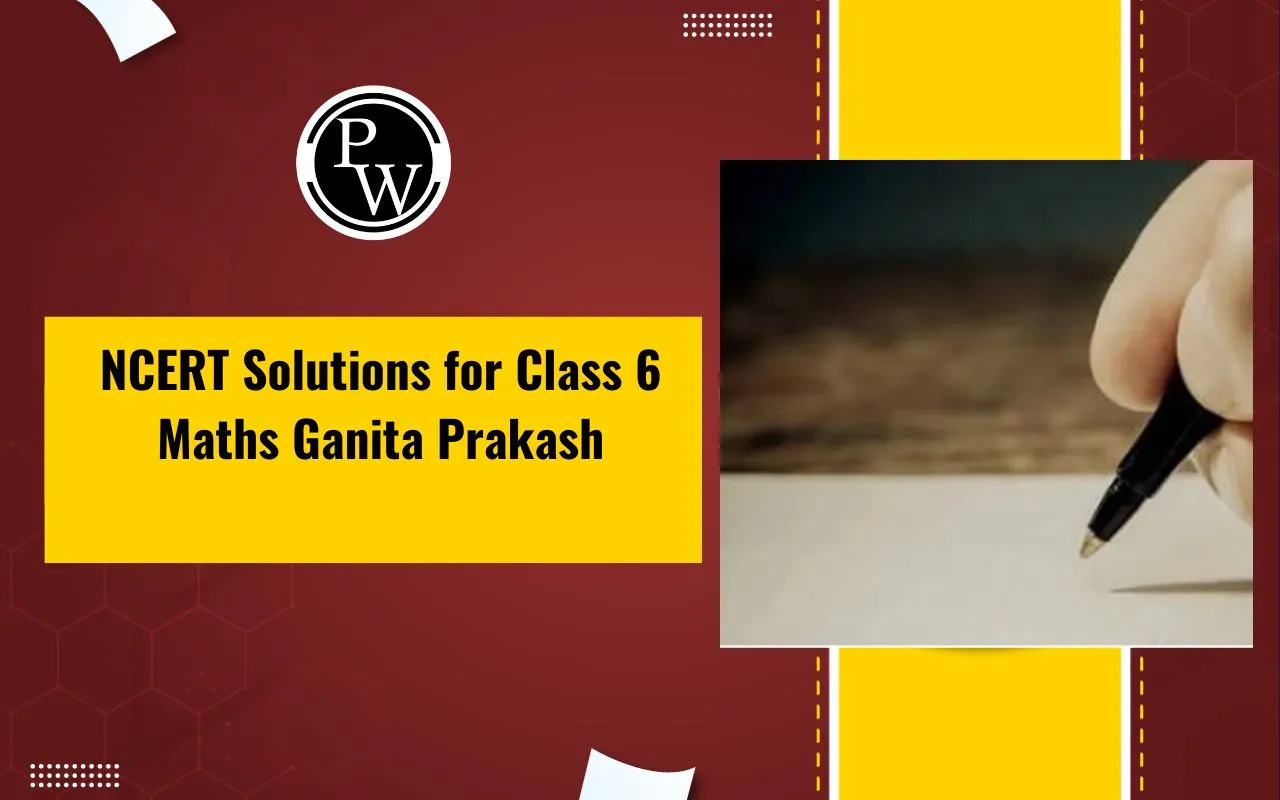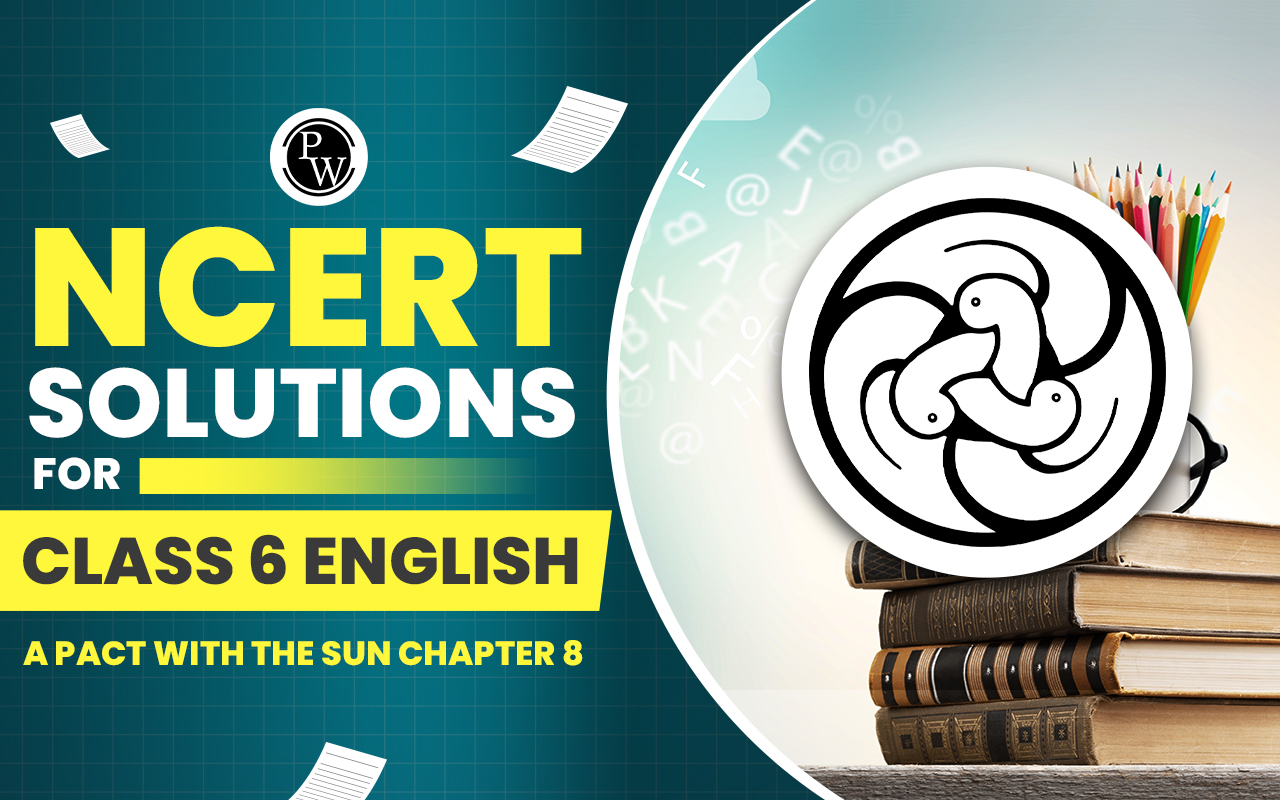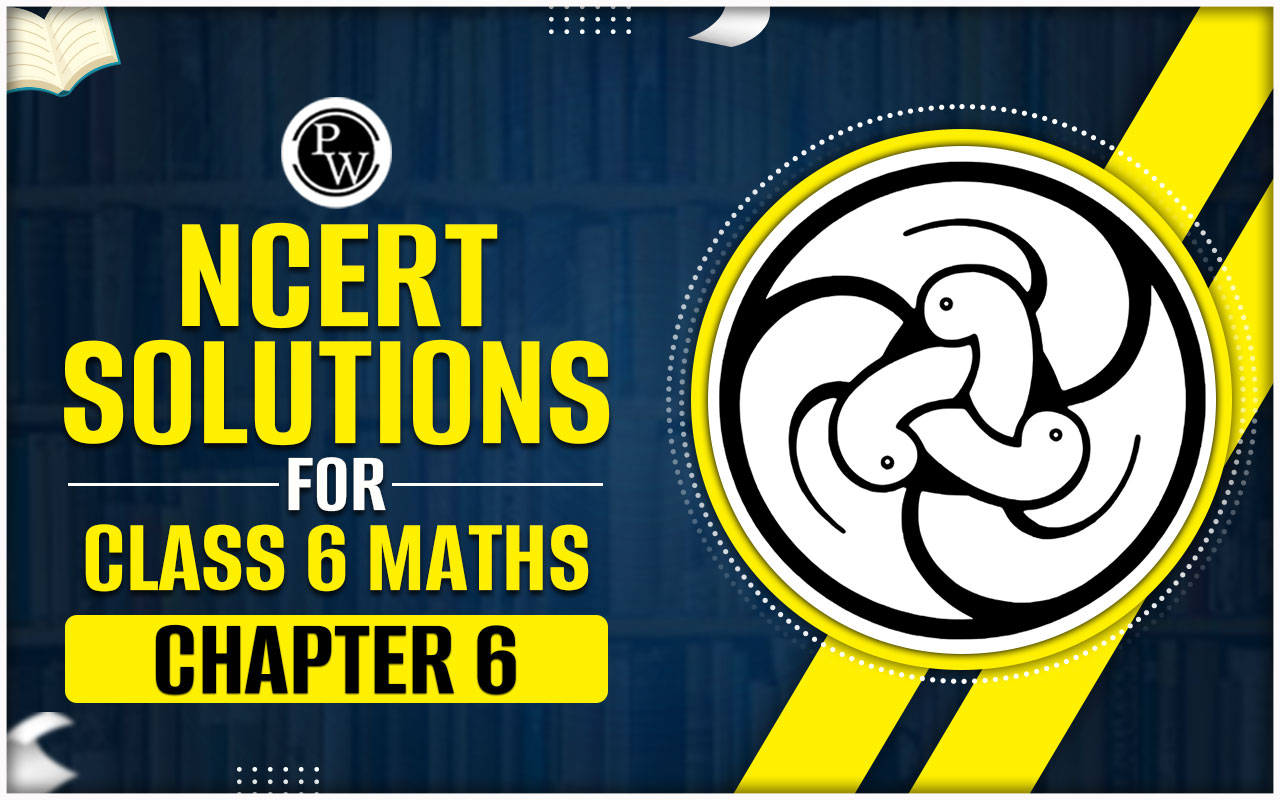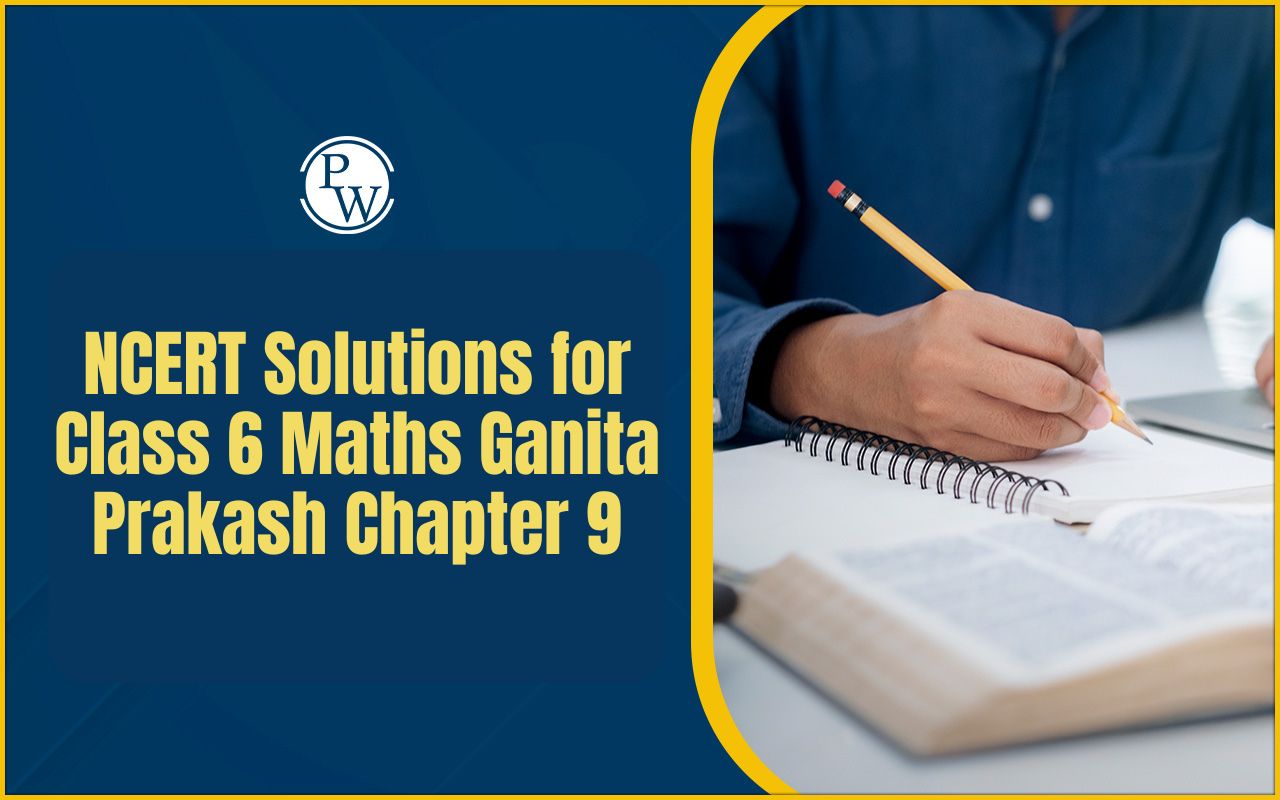
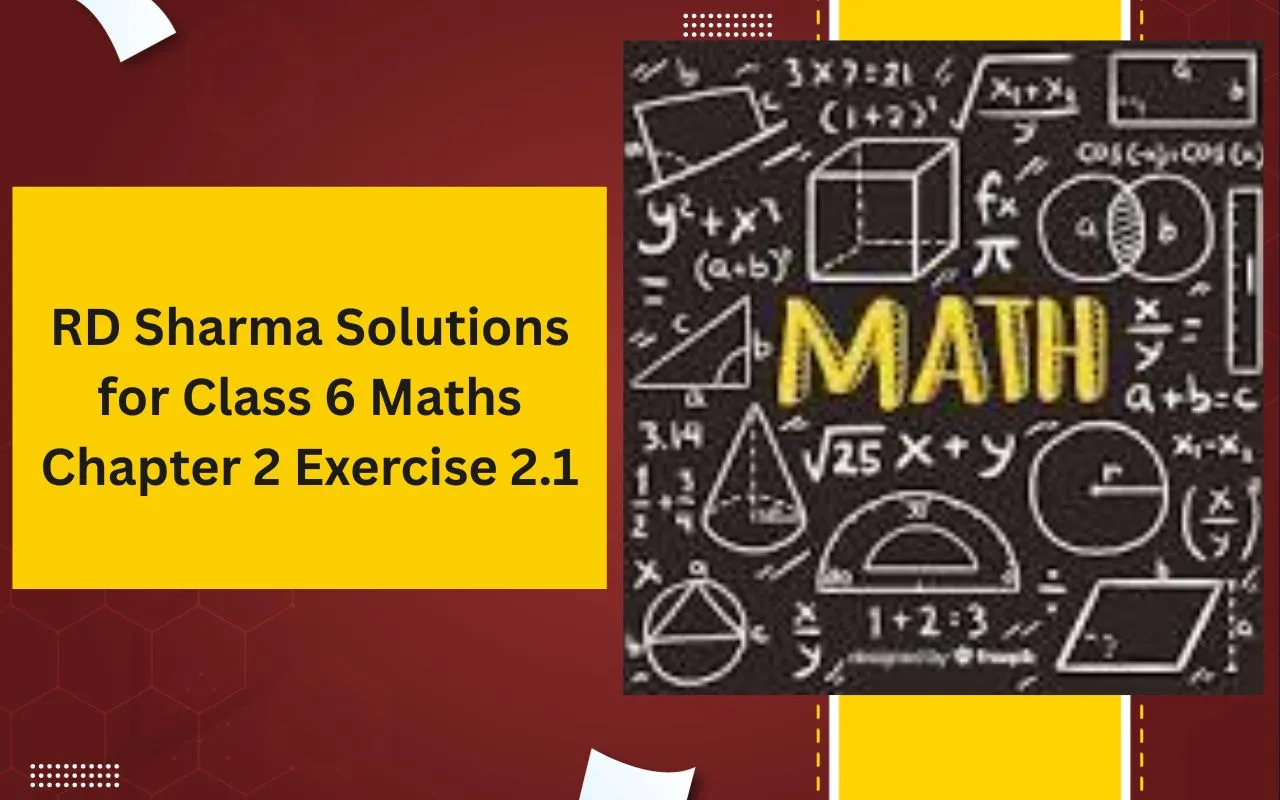
RD Sharma Solutions for Class 6 Maths Chapter 2 Exercise 2.1: RD Sharma Solutions for Class 6 Maths Chapter 2 Playing with Numbers Exercise 2.1 provide a detailed and structured approach to understanding the basics of factors and multiples, which are crucial for building a strong foundation in number theory.
The solutions are crafted as per the latest syllabus and exam pattern, ensuring students are well-prepared for school exams. Each question is solved step-by-step, reflecting the style of previous year papers to help students become familiar with common question types.
What is Covered in Exercise 2.1?
-
Introduction to the concepts of factors and multiples
-
Definitions of factor and multiple with four examples each
-
Listing all factors for given numbers
-
Identifying whether a number is a factor or multiple of another
-
Distinguishing between even and odd numbers
-
Short answer questions based on factors and multiples
-
Understanding the difference between prime and composite numbers
-
Recognizing that 1 is neither prime nor composite
-
Identifying the smallest prime and composite numbers
-
Building a foundation for divisibility and number properties in later exercises
RD Sharma Solutions for Class 6 Chapter 2 Playing with Numbers Exercise 2.1
RD Sharma Solutions for Class 6 Maths Chapter 2, Exercise 2.1, offer clear and concise explanations to help students master the basics of factors and multiples.
These step-by-step solutions are designed according to the latest syllabus and exam pattern, making them ideal for exam preparation and revision. Below, we have provided the complete solutions for Exercise 2.1 for your reference.
1. Define:
(i) factor
(ii) multiple
Give four examples each.
Solution:
(i) A factor of a number is an exact divisor of that number.
Example:
1. 5 and 2 are factors of 10 i.e. 5 × 2 = 10
2. 4 and 3 are factors of 12 i.e. 4 × 3 = 12
3. 4 and 2 are factors of 8 i.e. 4 × 2 = 8
4. 2 and 6 are factors of 12 i.e. 2 × 6 = 12
(ii) A multiple of a number is a number obtained by multiplying it by a natural number.
Example:
1. 10 is a multiple of 2 i.e. 2 × 5 = 10
2. 12 is a multiple of 4 i.e. 4 × 3 = 12
3. 8 is a multiple of 2 i.e. 2 × 4 = 8
4. 21 is a multiple of 3 i.e. 3 × 7 = 21
2. Write all factors of each of the following numbers:
(i) 60
(ii) 76
(iii) 125
(iv) 729
Solution:
(i) 60
It can be written as
1 × 60 = 60
2 × 30 = 60
3 × 20 = 60
4 × 15 = 60
5 × 12 = 60
6 × 10 = 60
Therefore, the factors of 60 are 1, 2, 3, 4, 5, 6, 10, 12, 15, 20, 30 and 60.
(ii) 76
It can be written as
1 × 76 = 76
2 × 38 = 76
4 × 19 = 76
Therefore, the factors of 76 are 1, 2, 4, 19, 38 and 76.
(iii) 125
It can be written as
1 × 125 = 125
5 × 25 = 125
Therefore, the factors of 125 are 1, 5, 25 and 125.
(iv) 729
It can be written as
1 × 729 = 729
3 × 243 = 729
9 × 81 = 729
27 × 27 = 729
Therefore, the factors of 729 are 1, 3, 9, 27, 81, 243 and 729.
3. Write first five multiples of each of the following numbers:
(i) 25
(ii) 35
(iii) 45
(iv) 40
Solution:
(i) 25
It can be written as
1 × 25 = 25
2 × 25 = 50
3 × 25 = 75
4 × 25 = 100
5 × 25 = 125
Therefore, the first five multiples of 25 are 25, 50, 75, 100 and 125.
(ii) 35
It can be written as
1 × 35 = 35
2 × 35 = 70
3 × 35 = 105
4 × 35 = 140
5 × 35 = 175
Therefore, the first five multiples of 35 are 35, 70, 105, 140 and 175.
(iii) 45
It can be written as
1 × 45 = 45
2 × 45 = 90
3 × 45 = 135
4 × 45 = 180
5 × 45 = 225
Therefore, the first five multiples of 45 are 45, 90, 135, 180 and 225.
(iv) 40
It can be written as
1 × 40 = 40
2 × 40 = 80
3 × 40 = 120
4 × 40 = 160
5 × 40 = 200
Therefore, the first five multiples of 40 are 40, 80, 120, 160 and 200.
4. Which of the following numbers have 15 as their factor?
(i) 15625
(ii) 123015
Solution:
(i) 15625
We know that 15 is not a factor of 15625 as it is not a divisor of 15625.
(ii) 123015
We know that 15 is a factor of 123015 as it is a divisor of 123015 because 8201 × 15 = 123015.
5. Which of the following numbers are divisible by 21?
(i) 21063
(ii) 20163
Solution:
(i) 21063
We know that the sum of digits = 2 + 1 + 0 + 6 + 3 = 12 which is divisible by 3
So 21063 is divisible by 3
A number is divisible by 7 if the difference between two times ones digit and the number formed by other digit is 0 or multiple of 7.
We get
2106 – (2 × 3) = 2100 which is a multiple of 7.
Therefore, 21063 is divisible by 21.
(ii) 20163
We know that the sum of digits = 2 + 0 + 1 + 6 + 3 = 12 which is divisible by 3
So 20163 is divisible by 3
A number is divisible by 7 if the difference between two times ones digit and the number formed by other digit is 0 or multiple of 7.
We get
2016 – (2 × 3) = 2010 which is not a multiple of 7.
Therefore, 20163 is not divisible by 21.
6. Without actual division show that 11 is a factor of each of the following numbers:
(i) 1111
(ii) 11011
(iii) 110011
(iv) 1100011
Solution:
(i) 1111
Sum of digits at the odd places = 1 + 1 = 2
Sum of digits at the even places = 1 + 1 = 2
So the difference between the two sums = 2 – 2 = 0
Hence, 1111 is divisible by 11 as the difference between the two sums is zero.
(ii) 11011
Sum of digits at the odd places = 1 + 0 + 1 = 2
Sum of digits at the even places = 1 + 1 = 2
So the difference between the two sums = 2 – 2 = 0
Hence, 11011 is divisible by 11 as the difference between the two sums is zero.
(iii) 110011
Sum of digits at the odd places = 1 + 0 + 1 = 2
Sum of digits at the even places = 1 + 0 + 1 = 2
So the difference between the two sums = 2 – 2 = 0
Hence, 110011 is divisible by 11 as the difference between the two sums is zero.
(iv) 1100011
Sum of digits at the odd places = 1 + 0 + 0 + 1 = 2
Sum of digits at the even places = 1 + 0 + 1 = 2
So the difference between the two sums = 2 – 2 = 0
Hence, 1100011 is divisible by 11 as the difference between the two sums is zero.
7. Without actual division show that each of the following numbers is divisible by 5:
(i) 55
(ii) 555
(iii) 5555
(iv) 50005
Solution:
(i) 55
The units digit in 55 is 5.
Therefore, 55 is divisible by 5.
(ii) 555
The units digit in 555 is 5.
Therefore, 555 is divisible by 5.
(iii) 5555
The units digit in 5555 is 5.
Therefore, 5555 is divisible by 5.
(iv) 50005
The units digit in 50005 is 5.
Therefore, 50005 is divisible by 5.
8. Is there any natural number having no factor at all?
Solution:
No. All the natural numbers are a factor of itself.
9. Find numbers between 1 and 100 having exactly three factors.
Solution:
We know that the numbers between 1 and 100 which have exactly three factors are 4, 9, 25 and 49.
Factors of 4 are 1, 2 and 4.
Factors of 9 are 1, 3 and 9.
Factors of 25 are 1, 5 and 25.
Factors of 49 are 1, 7 and 49.
10. Sort out even and odd numbers:
(i) 42
(ii) 89
(iii) 144
(iv) 321
Solution:
We know that
The numbers which are divisible by 2 are even and those which are not divisible by 2 are odd numbers.
So we get
42 and 144 are even numbers and 89 and 321 are odd numbers.
RD Sharma Solutions for Class 6 Maths Chapter 2 Exercise 2.1 PDF Download
RD Sharma Solutions for Class 6 Maths Chapter 2 Exercise 2.1 are available in an easy-to-download PDF format, making it convenient for students to study offline and revise anytime.
These solutions are structured as per the latest syllabus and exam pattern. Below, we have provided the direct PDF download link for Exercise 2.1 for your quick access.
RD Sharma Solutions for Class 6 Maths Chapter 2 Exercise 2.1
Study without using the internet
Preparation Tips for RD Sharma Class 6 Maths Chapter 2 Exercise 2.1
-
Focus on understanding the definitions of factors and multiples, not just memorizing them.
-
Practice writing all factors and multiples for different numbers to spot patterns and exceptions.
-
Create your own examples for even and odd numbers to reinforce the concepts.
-
Use quick mental checks for divisibility while listing factors—this builds speed and accuracy.
-
After solving each question, explain your reasoning aloud or to a friend to strengthen your understanding.
-
Review your mistakes and try to solve those questions again without looking at the solution.
-
Regularly attempt similar questions from previous year papers to get used to the exam style.
-
Summarize key takeaways from each session in a notebook for quick revision before exams.
RD Sharma Solutions for Class 6 Chapter 2 Playing with Numbers Exercise 2.1 FAQs
What is a factor?
What is a multiple?
How do you list all factors of a number?
What is the smallest prime number?

